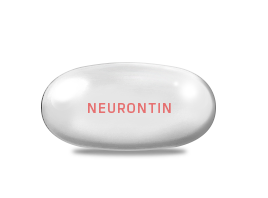Aggrenox - the combined antiplatelet agent. There are two active ingredients - acetilsalicylic acid and dipiridamol. Action of such combination is caused by different biochemical mechanisms. Aggrenox is prescribed for secondary prevention of ischemic stroke which proceeds as thrombosis. Medicine is also effective for prevention of transitory ischaemic attack.

Aldactone, which is spironolactone - is a competitive antagonist of aldosteron. In disteel kidney tubules increases removal of sodium and water, reduces - potassium. Lowers arterial pressure. It is prescribed at hyperaldosteronism, diagnostics of hyperaldosteronism, adenoma of adrenal glands, producing aldosterone; edema syndrome at chronic heart failure, cirrhosis, nephrotic syndrome, nephropathy of pregnant women; arterial hypertension, hypokalaemia, as additional medicine at malignant hypertension, hypokalaemia, prevention of hypokalaemia at patients with cardiac glycoside.

Amaryl - a medicine of group of sulphonylurea, the peroral hypoglycemic medicine. It has an initially prolonged effect. The mechanism of action consists in stimulation of secretion and release of insulin from beta cells of a pancreas (pancreatic effect). It also increases sensitivity of fatty and muscular tissues to effect of insulin (extrapancreatic effect).

Buspar - a partial agonist of serotonin and dopamine receptors - it has anxiolytic effect. Unlike benzodiazines buspirone does not suppress psychomotor function, or causes its small suppression; in moderate doses does not exponentiate effect of alcohol. It does not render somnolent, relaxant or antiepileptic effect.

Capoten suppresses activity of angiotensin-converting-enzyme therefore angiotensin-I turns into angiotensin II - substance which has strong vasoconstrictive action. Capoten reduces secretion of Aldosteronum in suprarenal cortex, at the same time the delay of sodium and water in an organism decreases. Capoten slows down process of bradykinin destruction and promotes increase of E2 prostaglandin, and also nitrogen oxide that causes vasodilating action. Thanks to these effects it is decreased the increased arterial pressure, the general peripheric resistance decreases, pressure in the right auricle, in a small circle of blood circulation decreases and cordial emission increases.

Cardizem, derivative benzothiazepine, has anti-anginal, antiarrhytmic and hypotensive effect. It is prescribed at arterial hypertension: after myocardial infarction, at patients with accompanying stenocardia when beta adrenoblockers, are contraindicative at patients with diabetic nephropathy, in cases when ACE inhibitors are contraindicated; angina of effort, Prinzmetal's angina; prevention of a coronary spasm when carrying out a coronary angiography or operation of aortocoronary shunting.

Diamox weak diuretic which is taken at edematous syndrome, craniocereberal hypertensia, glaucoma, epilepsy and mountain disease. Inhibits carbonic anhydrase in a proximal gyrose tubule of nephron, increases removal with urine Na+, K+, hydrocarbonate, does not influence Cl- egestion, alkalinizes urine.

Dipyridamole medicine for treatment and prevention of thrombosis and thromboembolism, prevention of occlusion of stents and aortocoronary shunts. Expands coronary vessels (preferential arterioles) and causes significant increase in volume speed of a blood velocity. Increases the level of oxygen in a venous blood of a coronary sine and its absorption by a myocardium.

Furosemide - «Loopback" diuretic; causes quickly coming, severe and short-term diuresis. Has natriuretic and chloro effects, increases clearance of K+, Ca2+, Mg2+. It is taken at edematous syndrome, cirrhosis, diseases of kidneys, heavy course of arterial hypertension and hypercalcemia.

Fights diarrhea (acute and chronic of various genesis: allergic, emotional, drug, radiation, with a change in diet and quality of food, in violation of metabolism and absorption), used for regulation of stool in patients with ileostomy. Loperamide (the effective ingredient of Imodium) reduces the tone and motility of the smooth muscles of the intestine. Slows down the peristalsis and increases the transit time of intestinal contents. Increases the tone of the anal sphincter, promotes retention of fecal masses and reduced urge to defecate. The effect develops quickly and lasts for 4-6 hours.

NSAIDs; has an anti-inflammatory, analgesic and antipyretic effect associated with the suppression of COX1 and COX2 that regulate the synthesis of Pg. Used to inhibit miosis during surgery of cataracts in the treatment of inflammatory processes caused by surgery. It is also used in the prevention and treatment of cystoid edema of macular retina after surgical removal of cataracts.

"Loop" diuretic, used for edematous syndrome with CHF II-III st., liver cirrhosis, kidney disease; swelling of the lungs or brain; arterial hypertension, hypercalcemia. Causes a rapidly advancing, strong and short-term diuresis. Has natriuretic and chlororetic effects, increases the excretion of K +, Ca2 +, Mg2 +.

An antidepressant used in cases of deep depression, panic disorders, social anxiety disorders, anxiety disorders. The mechanism of its action is based on the ability to selectively block the reuptake of serotonin by the presynaptic membrane of the neurons of the brain. Consequently, its serotonergic effect in the central nervous system that is responsible for the development of antidepressant effect, increases, which determines the effectiveness in the treatment of panic and social anxiety disorder.

A thiazide diuretic of the average intensity, applied in arterial hypertension, edema syndrome of different origin, gestosis and diabetes insipidus. Reduces reabsorption of Na+ at the level of the Henle loop cortical segment, without affecting its segment lying in the medulla of the kidney that detects a weaker diuretic effect compared with furosemide.

Prevents the occurrence of epileptic seizures, allodynia and hyperalgesia, and especially the pain response in different models of neuropathic pain. In addition,it reduces the pain response to peripheral inflammation, but does not affect the immediate behavior caused by pain.

The drug dilates coronary vessels (mostly arterioles) and causes a significant increase in volumetric blood flow velocity. Increases the content of oxygen in venous blood of coronary sinus and its absorption by myocardium. Promotes the development of collateral coronary circulation, reduction in a systemic vascular resistance, improves microcirculation, has angioprotective action.

























